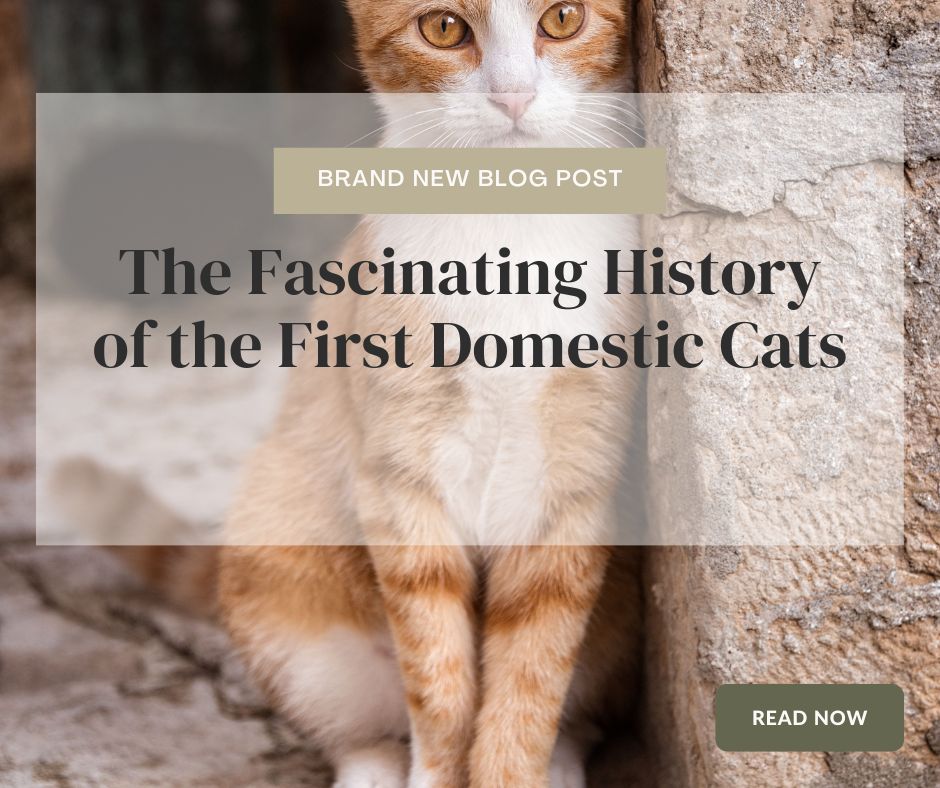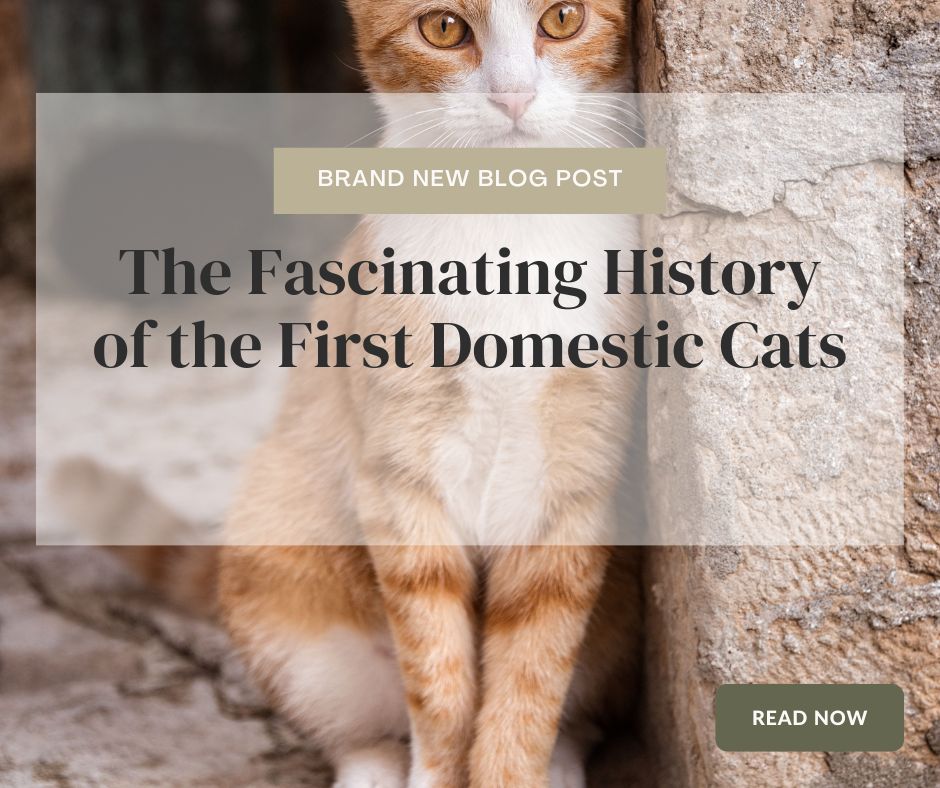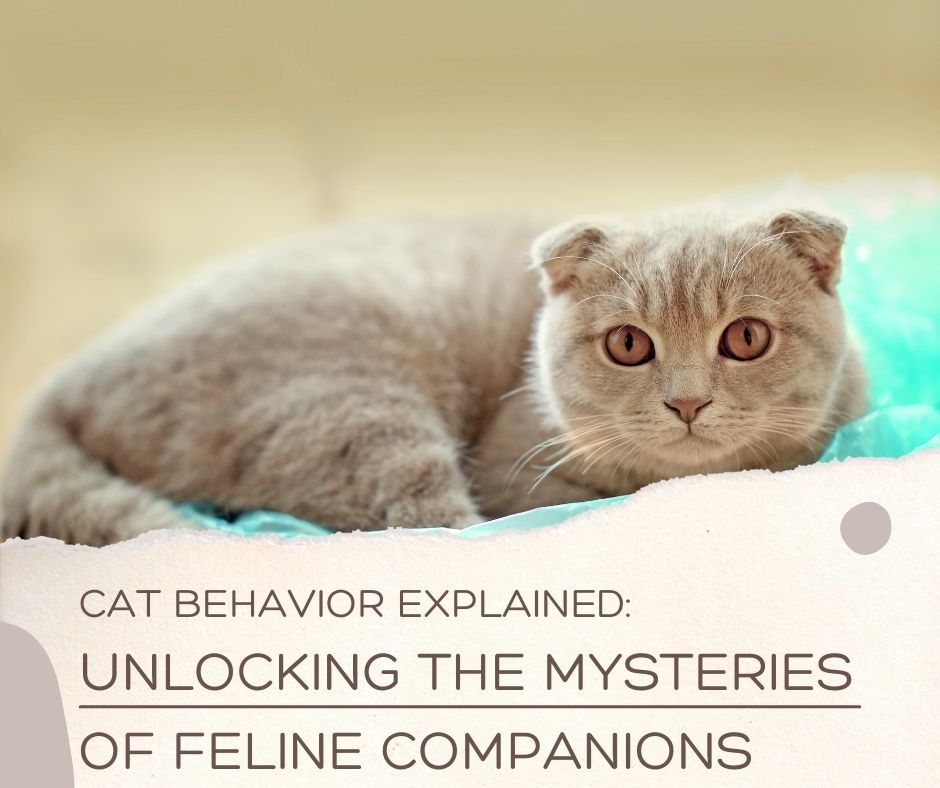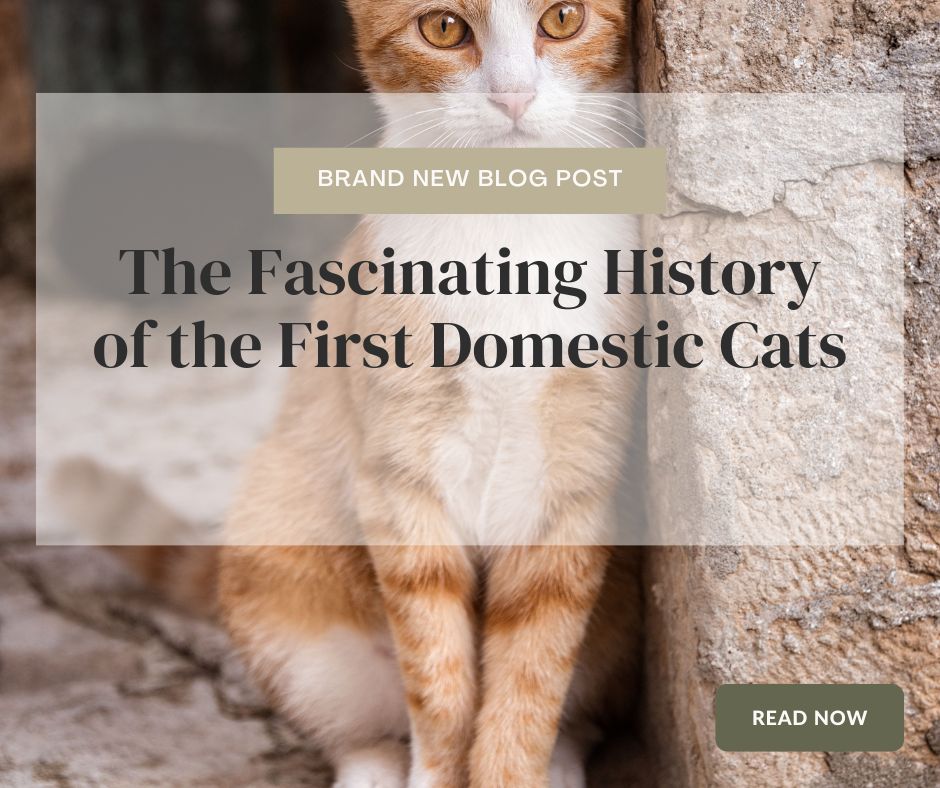The Fascinating History of the First Domestic Cats

The relationship between humans and cats is one that spans thousands of years, dating back to the earliest civilizations. While the domestic cat is now a ubiquitous part of households worldwide, the journey from wild feline to cherished companion was a complex and intriguing process. In this blog post, we delve into the enigmatic history of the first domestic cats, exploring their evolution from independent hunters to beloved members of our households.
The Wild Beginnings:
Cats (Felis silvestris lybica), commonly known as African wildcats, are considered the ancestors of our domestic feline friends. Evidence suggests that the domestication of cats began around 9,000 years ago in the Near East, where humans were transitioning from a nomadic lifestyle to settled agricultural communities.
1. Archaeological Findings (Davis, 2010):
Archaeological excavations at sites such as Çatalhöyük in Turkey have revealed the presence of cat remains buried alongside humans. This suggests that early farmers likely attracted wildcats by unintentionally creating environments conducive to rodent populations, which, in turn, drew in the felines.
2. Mutual Benefit (Driscoll et al., 2007):
The relationship between humans and wildcats was likely symbiotic. Wildcats provided pest control by preying on rodents that infested stored grains, and humans unintentionally offered a steady source of food for these feline hunters.
The Transition to Domestication:
The domestication of cats was a gradual process driven by mutual advantage. Over time, a mutualistic relationship developed between humans and cats, leading to a taming of the once-wild feline.
1. Genetic Adaptations (Driscoll et al., 2007):
Genetic studies have shown that domestic cats share a common ancestry with the African wildcat. However, as the domestication process unfolded, subtle genetic changes occurred, such as coat color variations and tameness traits, distinguishing domestic cats from their wild ancestors.
2. Cultural Significance (Vigne et al., 2004):
Cats began to assume roles beyond pest control, becoming integral to religious and cultural practices in ancient civilizations. For instance, ancient Egyptians revered cats and associated them with the goddess Bastet, reflecting a shift in perception from useful companions to revered beings.
The Global Spread:
As human civilizations expanded, so did the presence of domestic cats. Trade routes and migrations facilitated the spread of cats across continents, with different cultures adopting and adapting their roles.
1. Silent Travelers (Driscoll et al., 2009):
Cats were unwitting passengers on trade ships, gradually spreading to regions far beyond their initial domestication sites. Their role in controlling shipboard rodent populations made them valued companions to sailors.
2. Cultural Variations (Clutton-Brock, 1999):
Different cultures held distinct views on cats, shaping their roles and significance. In medieval Europe, cats were often associated with superstitions and accused of witchcraft, leading to widespread persecution. Meanwhile, in Asia, cats were revered for their mystical qualities and featured prominently in folklore.
Conclusion:
The journey of the first domestic cats is a tale of co-evolution with humans, driven by shared interests and needs. From their humble beginnings as pest controllers in ancient agricultural communities to their status as beloved pets worldwide, cats have woven themselves into the fabric of human history and culture. As we enjoy the companionship of our feline friends today, it's fascinating to reflect on the intricate journey that led to the domestication of these enigmatic creatures.
The Wild Beginnings:
Cats (Felis silvestris lybica), commonly known as African wildcats, are considered the ancestors of our domestic feline friends. Evidence suggests that the domestication of cats began around 9,000 years ago in the Near East, where humans were transitioning from a nomadic lifestyle to settled agricultural communities.
1. Archaeological Findings (Davis, 2010):
Archaeological excavations at sites such as Çatalhöyük in Turkey have revealed the presence of cat remains buried alongside humans. This suggests that early farmers likely attracted wildcats by unintentionally creating environments conducive to rodent populations, which, in turn, drew in the felines.
2. Mutual Benefit (Driscoll et al., 2007):
The relationship between humans and wildcats was likely symbiotic. Wildcats provided pest control by preying on rodents that infested stored grains, and humans unintentionally offered a steady source of food for these feline hunters.
The Transition to Domestication:
The domestication of cats was a gradual process driven by mutual advantage. Over time, a mutualistic relationship developed between humans and cats, leading to a taming of the once-wild feline.
1. Genetic Adaptations (Driscoll et al., 2007):
Genetic studies have shown that domestic cats share a common ancestry with the African wildcat. However, as the domestication process unfolded, subtle genetic changes occurred, such as coat color variations and tameness traits, distinguishing domestic cats from their wild ancestors.
2. Cultural Significance (Vigne et al., 2004):
Cats began to assume roles beyond pest control, becoming integral to religious and cultural practices in ancient civilizations. For instance, ancient Egyptians revered cats and associated them with the goddess Bastet, reflecting a shift in perception from useful companions to revered beings.
The Global Spread:
As human civilizations expanded, so did the presence of domestic cats. Trade routes and migrations facilitated the spread of cats across continents, with different cultures adopting and adapting their roles.
1. Silent Travelers (Driscoll et al., 2009):
Cats were unwitting passengers on trade ships, gradually spreading to regions far beyond their initial domestication sites. Their role in controlling shipboard rodent populations made them valued companions to sailors.
2. Cultural Variations (Clutton-Brock, 1999):
Different cultures held distinct views on cats, shaping their roles and significance. In medieval Europe, cats were often associated with superstitions and accused of witchcraft, leading to widespread persecution. Meanwhile, in Asia, cats were revered for their mystical qualities and featured prominently in folklore.
Conclusion:
The journey of the first domestic cats is a tale of co-evolution with humans, driven by shared interests and needs. From their humble beginnings as pest controllers in ancient agricultural communities to their status as beloved pets worldwide, cats have woven themselves into the fabric of human history and culture. As we enjoy the companionship of our feline friends today, it's fascinating to reflect on the intricate journey that led to the domestication of these enigmatic creatures.








Leave a comment